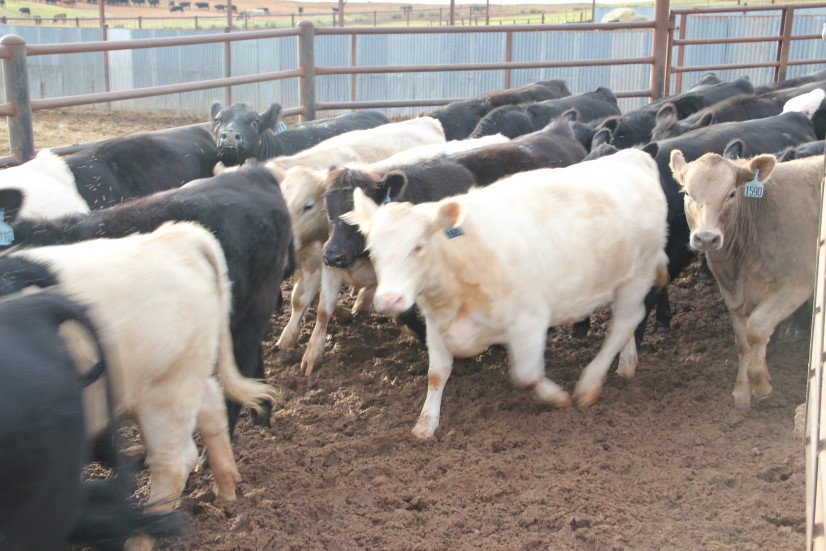
Agricultural News
Arkansas and Texas Researchers Looking for Answers to BRD
Wed, 25 Sep 2019 14:33:55 CDT
 A team of Animal Science faculty were recently awarded a $400,000 grant by the USDA National Institute of Food Agriculture to study the respiratory microbiome and metatranscriptome of beef cattle and their influences on bovine respiratory disease.
A team of Animal Science faculty were recently awarded a $400,000 grant by the USDA National Institute of Food Agriculture to study the respiratory microbiome and metatranscriptome of beef cattle and their influences on bovine respiratory disease.
The four-year study, which focuses on what is widely considered the most common and costly disease facing beef producers, will have work conducted across multiple Arkansas Agriculture Experiment Stations in Batesville, Savoy and Hope. The group, consisting of Jiangchao Zhao, Beth Kegley, Jeremy Powell, Jung Ae Lee-Bartlett, John Richeson (West Texas A&M University) and Sarah Capik (Texas A&M AgriLife Research), looks to use the grant money to validate their study.
"This funding is very exciting and timely," said Zhao. "It will allow our strong interdisciplinary team to investigate the correlations between the bovine respiratory microbiome and BRD with a longitudinal design and multi-location cross-validation."
Bovine respiratory disease, or BRD, is an issue that has plagued beef cattle producers for decades, and this new research introduces some techniques that will differ from those done in the past. Most of the prior research focused on studying cultured bacteria only, while essentially de-emphasizing uncultured bacteria. Another perceived shortcoming with the prior research exists within the process of collecting nasal samples from cows, which used an invasive technique deep into the animal's nasopharyngeal. This type of collection was often more difficult and could cause bleeding, thus preventing larger amounts of samples from being taken. A third issue with prior research involved the acquisition of calves used in the studies. Typically, these animals were brought in from auctions which resulted in researchers possessing very little information on the genetic or health backgrounds of each calf.
"The problem has been there for many years," said Zhao. "But little progress has been made due to many factors, some of which include the limitations to the few cultured bacteria, the lack of cohorts of calves with known backgrounds and the lack of a fast and non-invasive sampling method."
Utilizing these grant funds, Zhao and the group plan to implement new techniques and methods in hopes of making further progress into predicting and treating BRD. To start, the research will focus on both cultured and uncultured bacteria, thus highlighting the additional form of bacteria. They will also be adjusting how samples are collected, instead opting to use a short nasal swab over the invasive nasopharyngeal swabs. By using this technique, the researchers will be able to safely and easily collect a large number of samples, while simultaneously making it much easier on the cows. The final aspect this group hopes to improve upon is through the utilization of a longitudinal study. This form of data collection will allow researchers to obtain multiple samples from the same animals throughout the duration of their life cycle. The longitudinal study will also allow researchers to gain a solid understanding of each cow's genetic background and health history.
"This longitudinal design is very powerful in that it eliminates many confounders such as genetics and sex," said Zhao. "This design will also reveal the temporal and spatial dynamics of the bovine respiratory microbiome, which sheds insight into the ecology and mechanisms of the pathobiology of BRD."
Through this research, Zhao and the group hope to validate their study and allow their findings to be used to help predict BRD in calves using the samples obtained from the nasal swabs. The results of these nasal samples could lead directly towards helping beef cattle producers save money and maintain a healthier stock overall. For example, a young calf whose nasal swab comes back clean would not need to be exposed to expensive BRD treatments. However, if a calf's nasal swab is showing predictive signs of BRD, then it could be diagnosed and treated heavily at a very young age, thus greatly increasing its likelihood of growing up healthier.
"We hope to develop an accurate panel of nasal microbiome biomarkers that could be used to predict and diagnose the onset of BRD with a fast and non-invasive nasal swab sampling method," said Zhao. "We would also better understand the pathobiology of BRD and hopefully identify some probiotics that could be used to prevent and/or treat BRD to reduce the cost and load of antibiotic treatment."
This is a four-year project starting from August 1, 2019 to July 31, 2023, with two animal trials for two consecutive years (180 cattle each year). This large animal study with a longitudinal design, multi-location and multi-year cross-validation is expected to have a big impact on the beef cattle industry.
Source- University of Arkansas Animal Science Department
WebReadyTM Powered by WireReady® NSI
Top Agricultural News
More Headlines...





